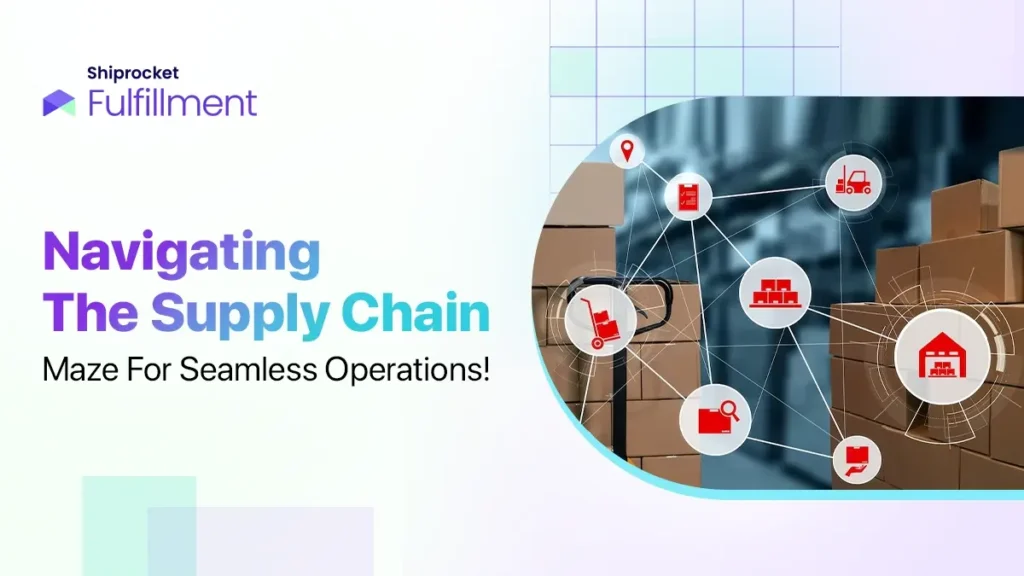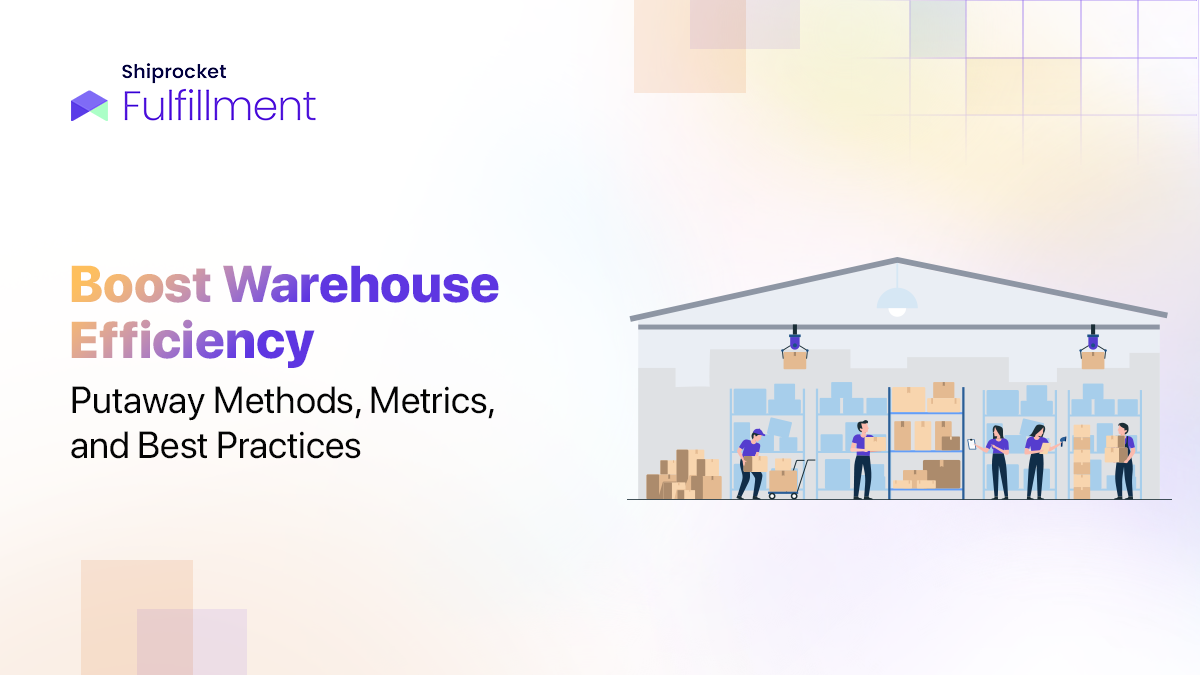Products travel through a vast, interconnected process called the supply chain before they are prepared for sale. Distributors, production lines, and raw materials are all involved in this process. Supply chains have been around for a while, but businesses are just now focusing more on them to streamline their processes. It’s necessary to organise your inflow and outflow processes to increase productivity and save costs.
79% of businesses with effective supply chains see revenue growth that is higher than average for their sector. Companies with well-managed supply networks have 3 times quicker cash-to-cash cycles, 15% reduced supply chain expenses, and less than 50% of inventory holdings.

Now, let’s look at its components, links, and definition.
What is Meant by Supply Chain?
A supply chain comprises companies or individuals working to produce and distribute goods and services. The chain starts with those who produce raw materials and concludes when a van delivers the finished product to the end user.
Various components contribute to the supply chain, including producers, vendors, warehouses, transportation companies, distribution centers, and retailers. These entities perform product development, marketing, operations, distribution, finance, and customer service functions.
The supply chain encompasses all individuals, organisations, resources, activities, and technology in creating and selling a product. It spans from the delivery of source materials from supplier and the manufacturer to the eventual delivery of the finished product to the end user. The supply chain segment responsible for transporting the finished product from the manufacturer to the consumer is known as the distribution channel.
Supply Chain Process: An Explanation
In the supply chain, you have different links that work together. The product reaches the customer by this process. The whole system moves in one direction, from the raw material supplier to the consumer. Businesses must have a good supply chain to keep the movement of goods organised and ensure the customers are satisfied with what they get.
Links in a Supply Chain
There are six links that play a crucial part in the supply chain process:
1. Manufacturer/Producer
Producers are entities responsible for the production of goods or the provision of services. This category encompasses organisations extracting raw materials, such as minerals, oil, and timber. It also includes those engaged in agricultural activities, animal husbandry, or fishing.
Raw material producers supply the foundational elements necessary for manufacturing. Finished goods producers, on the other hand, utilise these raw materials and sub-assemblies from various sources to construct their final products. The supply chain network relies on producers to furnish the products and services essential for the operations of other participants in the supply chain.
2. Raw Material Suppliers
To make quality products, you need top-notch quality raw materials. Manufacturing starts with the suppliers, the businesses providing the necessary resources for your products. partnering with a few dependable suppliers prevents delays and maintains a smooth production flow.
3. Processors
Processing is the process of converting a raw product into an ingredient. The processor is one of the most crucial links in the supply chain since it converts raw materials into finished goods that can be sold.
4. Distributors
Distributors, also known as wholesalers, purchase goods in large quantities from manufacturers and resell them to other companies. They serve manufacturers by keeping their items stocked and overseeing a range of duties like customer service, inventory control, and warehouse operations. They are essential for helping businesses sell bigger volumes of goods more easily.
5. Retailers
Retailers are companies that offer goods to consumers directly. They maintain tabs on customer preferences and desires. They utilise factors like pricing, variety of items, excellent service, and ease of use to entice consumers to shop.
6. Consumers
Consumers are individuals or companies that purchase and utilise goods. If a business buys something to use in another thing they sell, those are customers too. Consumers rely on retailers or stores to supply them with the necessities.
Components of the Supply Chain Process
There are 5 components of the supply chain process. These are:
- Planning: When thinking about starting a retail business, you must make a crucial decision on whether to buy readymade items or manufacture your own utilising raw materials and a manufacturing technique. This strategic choice lays the groundwork for your supply chain to operate.
- Sourcing: After you have planned the groundwork of your supply chain process, sourcing is the next step. Choosing suppliers wisely might have a significant influence on everything. Making the wrong choice might cost you a lot of money and could also completely disrupt the supply chain. If you want to offer your customers reliability you must have an exhaustive assessment and verification process for your vendors.
- Inventory: If you have enough control over your inventory and estimate inventory levels with consumer expectations, you can ensure that there are no disruptions in the flow of the supply chain process. Purchasing your supplies from multiple suppliers can guarantee a steady flow of goods or raw materials in case of any disruptions.
- Manufacturing and Transportation: During the manufacturing process, you should concentrate on making sure that enough high-quality items are produced. Part of this process is planning for the logistics of delivering your goods to different retail sites and warehouses or storage facilities where they will be kept.
- Return of Items: Addressing the return of items with issues is a crucial aspect of the supply chain process. It entails putting in place a clear plan that addresses every aspect, from product delivery to managing client refunds in the event of issues. Improving the efficacy of your supply chain as a whole requires improving the efficiency and smoothness of your return process.
Supply Chain Process Management: Details
In supply chain management or SCM, you are in charge of the flow of goods. For all the things you utilise to create and market your goods, it functions similarly to a traffic controller. The intention is to reduce costs and expedite the delivery of goods to clients.
Effective supply chain management helps you stay within your budget and prevents you from running out of necessities. This is crucial because it guards against expensive errors like product recalls, lawsuits, and damaged reputations.
SCM is divided into five key phases:
- Planning.
- Getting the raw material you need (sourcing)
- Making the products (production)
- Sending them out to customers (distribution)
- Dealing with returns if required
In supply chain management your duties include controlling expenses, guaranteeing a steady supply, and ensuring that everything runs well. SCM aims to manage and integrate all processes involved in producing and distributing a product. This entails keeping an eye on what’s in stock, producing the goods, shipping, selling it, and maintaining the inventory of the businesses.
Shiprocket Fulfillment: Seamless Solution for B2B and B2C Excellence!
Streamline your retail and eCommerce operations effortlessly with Shiprocket Fulfillment—a comprehensive solution for superior B2B and B2C order fulfillment. Leverage 42+ strategically positioned fulfillment centers across the nation, enabling you to effortlessly distribute inventory without the burden of substantial warehouse investments. Simplify the entire order processing, inventory control, and performance analysis through a unified management system, consolidating these tasks into a single, user-friendly platform. Manage product visibility across various channels with 12+ integrations, ensuring streamlined order management. Covering 24,000+ pin codes and partnering with 25+ reliable courier services, expand your reach effortlessly across India.
Conclusion
If you own an online retail business or are a part of any company, it is essential to apply a dependable supply chain strategy to ensure the seamless functioning of your firm. It can help you in customer retention and increase brand loyalty which in turn encourages smooth operations across several links in a business. With a properly incorporated supply chain process you can guarantee no delay in shipment of products or services to the doorstep of your buyers. Each step of the supply chain process impacts the success of a business, thus cooperation is essential across the network.
The supply chain method ensures that your manufacturing facilities and storage spaces are managed by this efficient process, ensuring that products arrive to customers on time. Smooth operations through effective and transparent communication with all supply chain participants is essential to avoiding challenges. When carried out correctly, this process ensures manufacturing and product delivery on time.
Manufacturers may save costs and increase overall efficiency by streamlining operations, cutting lead times, removing bottlenecks, and optimising supply chain processes through precise demand forecasts.
Through forecasting, businesses may precisely measure the market and evaluate how well their supply chain meets consumer demands. Without dedicated supply chain forecasting, companies run the risk of improperly projecting demand and either over or under-supplying the market.
Businesses utilise supply chain metrics, also known as KPIs, as performance indicators to evaluate and maximise the productivity and efficiency of different supply chain activities. Among other things, you may manage suppliers, shipping, sales, inventory, and more with the help of this visual data.





